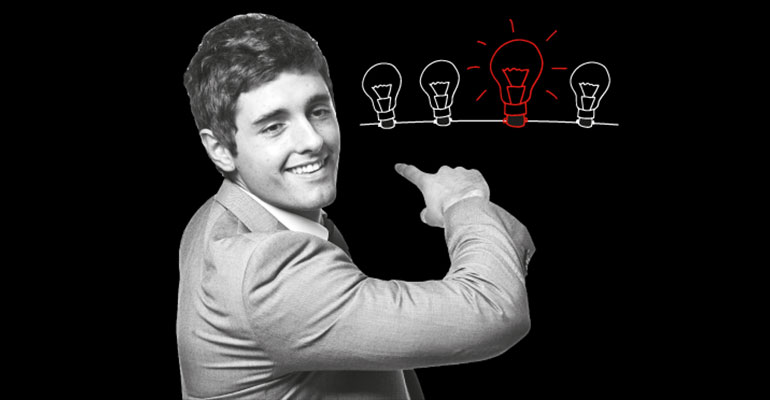Since the turn of this century enterprises have been struggling to keep up with the expectations and demands of 'digital natives" – those citizens either born or raised during the age of connected technology.
With today's exponential rate of technology change, digital natives – who have come to think the world has always had computers and the Internet – have inevitably developed a short attention span, shorter patience with getting results, and little tolerance for technology delays.
This has put traditional, long-standing enterprises, burdened with legacy, siloed technology, in a tight spot. Up to the late 20th century, such enterprises had enjoyed leading society with their innovations and keeping a firm hand on the controls. Then, within decades, they found themselves struggling to keep with the insatiable appetite of digital natives for rapid innovation, rapid outcomes from technology and rapid satisfaction of their needs. These techno-aware citizens now demand speed, agility and user-friendliness and they want it now.
Comfortable IT silos are passé
Until this sea change swamped them, many enterprises were quite comfortable with building technology silos in their own good time, bolting on new features and systems as they went along, sometimes creating complex 'Frankenstein' structures. They accepted that their IT architecture, for example, running the supply chain and operations systems responsible for executing online product orders, was somewhat slow and inflexible. Now, the digital natives want much more and won't hesitate to change suppliers if they are not satisfied. They want results and they want them now.
A recent article by research house McKinsey, puts forward a strategy that could resolve this enterprise dilemma - that of adopting a 'two-speed IT architecture' where "companies develop their customer-facing capabilities at high-speed, while de-coupling legacy systems for which release cycles of new functionality stay at a slower pace". Gartner calls this 'bimodal IT' and forecasts that by 2017, 75% of organisations will be bimodal in some way.
The McKinsey experts argue that to deliver "an enriched customer experience requires a new digital architecture running alongside legacy systems".
Consumer-centric front end
McKinsey postulates that: "This (two-speed architecture) implies a fast-speed, customer-centric front end running alongside a slow-speed, transaction-focused legacy back-end.
For software-release cycles and deployment mechanisms, the customer-facing part should be modular, to enable quick deployment of new software by avoiding time-consuming integration work.
In contrast, the transactional core systems of record must be designed for stability and high-quality data management, which leads to longer release cycles."
Four key recommendations
In their article, the McKinsey experts put forward four recommendations for enterprises to use to become effective digital enterprises.
- The digital business model enables the creation and speedy time to market of digital products and services. This demands that companies get skilled at digital product innovation that meets snowballing customer expectations.
- To satisfy customer expectations to be able to move from one channel to another, companies should develop a seamless multi-channel (physical and digital) experience. McKinsey's article gives the example of shoppers using smartphones to reserve a product online, then collect it in a store.
- Using big data and advanced analytics, is vital to better understanding consumer behaviour. McKinsey says that "gaining insight into customers' buying habits – with their consent of course – can lead to an improved customer experience and increased sales through more effective cross-selling". Experienced tech companies such as Logicalis have vast resources to partner with enterprises to help them capitalise on Big Data and Advanced Analytics.
- Automating operations and digitising business processes enables faster customer response time and can also minimise operating waste and costs.
A substantial IT challenge
McKinsey acknowledges that each of these four recommendations pose a "substantial challenge for IT". They say, for example, that enterprise IT channels "are often managed and tracked independently, complicating maters for customers who wish to use multiple channels as they pursue a transaction". The ideal outcome is that customers can purchase individually tailored products across multiple channels.
The McKinsey experts also acknowledge that "analytics capabilities are especially difficult to integrate with operational process flows. Any manual steps n there processes, such as re-keying and transferring information, present major obstacles to both analytics and automation of processes. Although the McKinsey article doesn't specifically say it, reading between the lines, it is obvious that consulting with professional outside experts on Big Data and Analytics is a very sensible strategy.
An important competitive factor
And here's a valuable nugget that jumps out from the article: "The ability (of an enterprise) to offer new products on a timely basis has become an important competitive factor; this might require weekly software releases for an e-commerce platform".
McKinsey says: "That kind of speed can only be achieved with an inherently error-prone software-development approach of testing, failing, learning, adapting, and iterating rapidly. It's hard to imagine that experimental approach applied to legacy systems".
So, it's time for organisations to consider shifting gear to a two-speed IT architecture and a valuable first step would be to consult the outside experts – such as Logicalis – to achieve this important transformation.
To get a better understanding of how Logicalis can help you during this time of transformation, head to the Services and Solutions page.



